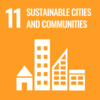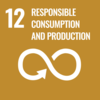The Smart Compost Bin (SaCoB) was invented to make the composting of food waste more efficient, simple, and timesaving. SaCoB was innovated in line with industrial revolution (IR 4.0) technologies, with the application of Smart Sensor to monitor the production of high quality compost. The compost container, sensor device, database, and mobile application were the four primary components of the SaCoB. SaCoB has a stainless steel blade shaft installed, which is highly significant for speeding up the composting process by lowering time and reducing the size of food waste particles.
One of the key parts of innovation is the sensing device's installation. Two parameters such as temperature and moisture content must be measured in order to obtain a high quality of the food waste compost produced. A number of sensors have been consolidated for the temperature and moisture content sensors (AM2301, DS18B20, Si7021) to collect the data, then shared the data to other ITEAD smart devices (Sonoff). This device will be packed inside a waterproof case which is connected to the probes to make sure the whole monitoring systems and transmission system are protected from the water. Database components are designed and developed to store and use the collected data. The mobile application is dynamic and supports a set of functionalities and versatility whereby the data can be recorded anytime at any place. SaCoB is linked to a few Sustainable Development Goals (SDGs) including SDG2, SDG11, SDG12, SDG13 because it aims to achieve sustainable waste management throughout the recycle process limiting discharge to the air, water, and soil to reduce negative effects on human health and the environment and to achieve food security by using compost for the home-grown plants.



